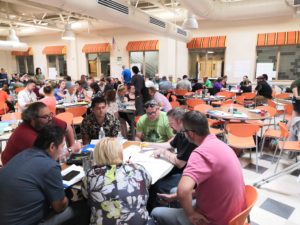Professional Development and Planning Support for Teachers
ACADEMIC LANGUAGE PROFESSIONAL DEVELOPMENT FOR ADAMS 14- Remote Learning
During school closure during the pandemic, we needed to shift our professional
development needed to shift format. In order for teachers to make the most of their time, we developed a series of e-workshops that could be undertaken asynchronously when time was available. We also used strong and weak examples that teachers analyzed and modeled our resources via Google
Classroom. We got great feedback from the teachers on the format and content.
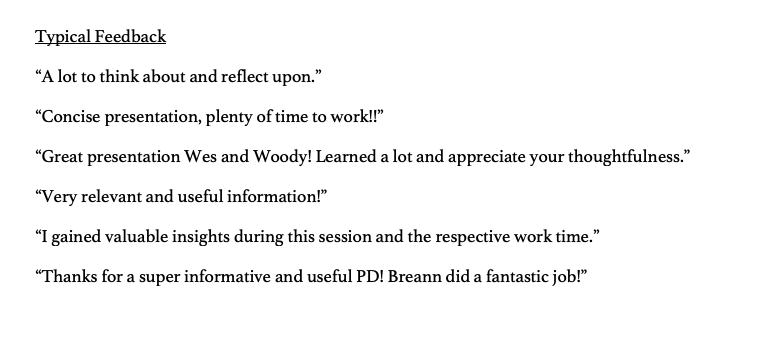
Guidance During Remote Learning:
|
|
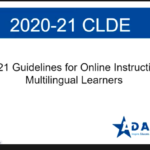 |
| Identification and Placement of Multilingual Learners |
|
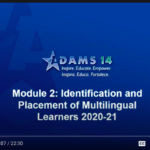 |
|
Norming Student Writing and Setting Goals |
|
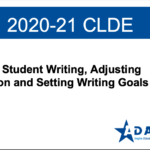 |
Including Language Information in IEPs
|
Module 1: Introduction to WIDA
|
Module 2: Present Levels
|
Module 3: Special Considerations
|
| Considering WIDA Levels | |
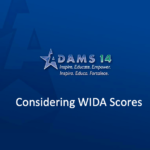 |
Examples of Model Student Responses with Sentence Frames
ACADEMIC LANGUAGE PROFESSIONAL DEVELOPMENT FOR ADAMS 14
As the K-12 Linguistically and Culturally Diverse Education Coordinator for Adams 14, I led the district-wide ELD-focused professional development, which led to an almost 40% increase in structured talk and decrease in teacher talk, and an increase in writing scores. We performed a needs analysis to determine our focus, assembled and cross-section of materials, trained teacher leaders on the material so they could lead the work with small groups. The sessions 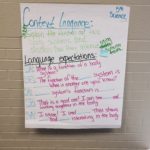 included relevant professional reading, modeling and sharing of strategies, use of student data, teacher planning time and always ended with a useable product (lesson plan, specific strategy or scaffold). Teacher feedback for the series was overwhelmingly positive in that teachers stated they were better prepared to support multilingual learners (MLs).
included relevant professional reading, modeling and sharing of strategies, use of student data, teacher planning time and always ended with a useable product (lesson plan, specific strategy or scaffold). Teacher feedback for the series was overwhelmingly positive in that teachers stated they were better prepared to support multilingual learners (MLs).
- Using WIDA, Sys ELD and CM to Increase Structured Student Talk OVERVIEW
- Using WIDA, Sys ELD and CM to Increase Structured Student Talk – Materials
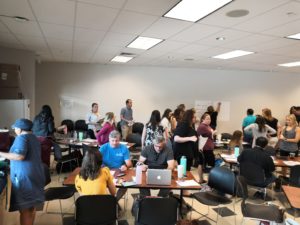 PLANNING FOR LANGUAGE PROFESSIONAL DEVELOPMENT FOR ADAMS 14
PLANNING FOR LANGUAGE PROFESSIONAL DEVELOPMENT FOR ADAMS 14
As the needs analysis from the district identified unit-level planning for language to a be a high need for teachers, our team developed district-wide ELD guidance and supports embedded into curriculum mapping and PLC processes based on WIDA Can Do Key Uses and the Forms and Function work of Susannah Dutro.
Beginning with the end in mind, our ELD teams use the WIDA Standards Framework to analyze academic unit and lesson content in terms of accessibility (comprehensible input) and expectations of students’ oral and written production. We then create language objectives and select appropriate material and implement supports and that align with learning targets WIDA level.
I have worked with teams in various district settings to create model student responses on formative assessments. Using guiding questions from WIDA and Constructing Meaning, we analyze our models for language patterns at the word/phrase, sentence, and discourse level. We then prioritize these language forms and chunk their instruction through the unit supported by word banks and differentiated sentence frames.
This resulted in increased teacher confidence and increased in writing scores.
- ELD Backwards Planning Support
- ELD Task Analysis- Example
- Primary Unit Level Language Planning
- Secondary Unit Level Language Planning
Examples of Model Student Responses with Sentence Frames
WIDA CLIMBS TRAINER
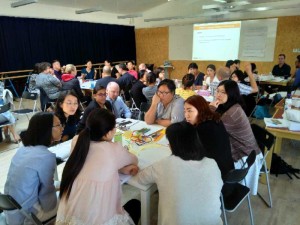 As a firm believer in WIDA and its Can Do Philosophy, I am excited to be an authorized WIDA CLIMBS Trainer (Content and Language Integration as a Means of Bridging Success).
As a firm believer in WIDA and its Can Do Philosophy, I am excited to be an authorized WIDA CLIMBS Trainer (Content and Language Integration as a Means of Bridging Success).
WIDA CLIMBS helped our staff unify our approach to helping ELLs develop academic language and ensure their access to challenging grade-level content. Through this collaboration, we were able to support our students in raising WIDA scores an average of one full level per student in 2018-19!
I delivered WIDA CLIMBS to Daystar Academy’s three schools throughout the 2018-19 school year and facilitated the certification of over 30 staff members.
During this time, as a professional community we developed a common vocabulary which with to promote success with our 400+ multilingual learners and we engaged in the following endeavors:
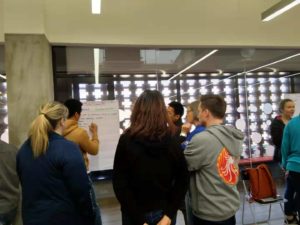 Examining the connections between culture and language
Examining the connections between culture and language- Considering the culture of collaboration in our local contexts
- Describing principles of acquisition and learning
- Examining the features of academic language
- Exploring the connections between language acquisition principles and WIDA ELD practices
- Exploring how academic language varies across subject areas and domains
- Developing differentiation for language
- Investigating the language demands of texts and tasks
- Recognizing effective feedback practices
- Providing effectivefeedback to language learners
- Discussing learning strategies
- Developing instruction andlearning strategies for ELLs
- Examining scaffolding strategies
- Identifying scaffolding strategies in practice
- Reflecting on peer observations
- Planning differentiated lessons using WIDA framework
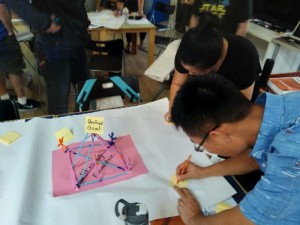
As Daystar Academy is a WIDA consortium member, I have sent several teachers to the WIDA Institute. Further, our team has been working with WIDA Can Do Descriptors and Performance Definitions for two years. We were excited to take this next step in developing our school-wide
approach to serving ELLs through collaboration and best practices.
